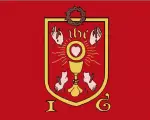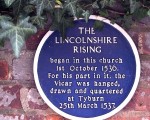
Thank you so much to Kate Cartwright for alerting me to this news. On Friday 30th November, between 11am and 12.30pm, the Bishop of Middlesbrough, the Rt Rev Terence Drainey, is going to be unveiling a plaque in honour of Robert Aske, a lawyer who was one of the leaders of the Pilgrimage of Grace Rebellion of 1536, outside Clifford’s Tower in York.
[Read More...]




